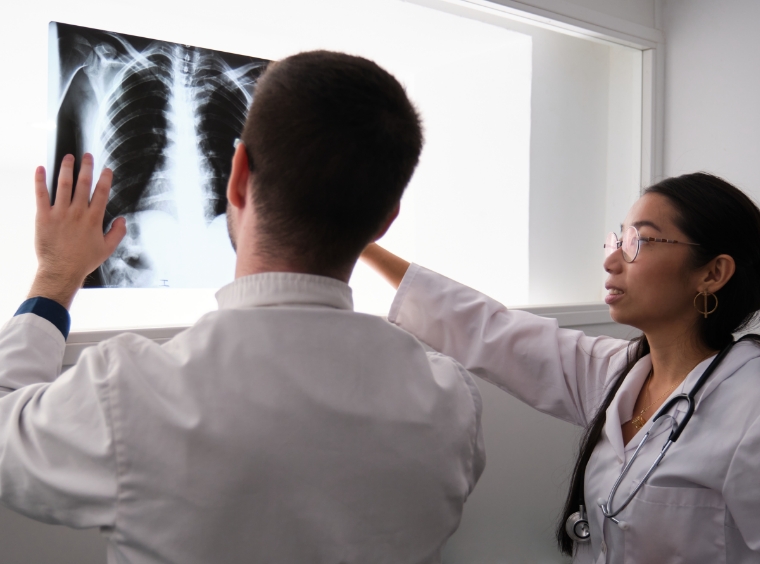October is Breast Cancer Awareness Month, a month where the healthcare community raises awareness about breast cancer and the importance of early testing. Breast cancer is the most common cancer diagnosed in females, and is the top contributor of cancer death in women in Singapore (source: Singapore’s National Registry of Diseases Office.)
Due to this, there is plenty of hearsay and theories on what causes breast cancer. Some may be true, others not at all. Here are some common misconceptions to be wary of.
If there’s no family history of cancer, there’s no need to check for breast cancer.
Only 5-10% of breast cancer cases are believed to be hereditary, which means that most breast cancer patients are the first in their family to be diagnosed with the condition (source: BreastCancer.org).
That’s why it’s important for women to go for regular mammograms whether or not they have family history. In early cancer, there may be no symptoms or obvious telltale signs. The only way to detect cancer is through screening. If you catch cancer early, the cure rate is much higher.
Go for breast cancer screening once a year if you are between 40 to 45 years old, and once every two years if you are between 50 to 59 years old. If you are under 40, speak to your family doctor about breast cancer risk factors to check if you should start receiving mammograms earlier than the recommended age.
Radiation from mammograms can cause breast cancer.
A mammogram, or an x-ray examination of the breast, is currently the gold standard for the early detection of breast cancer. During a mammogram, the breast tissue is compressed to reduce the thickness of the breast in order to get high-quality x-ray images. From there, doctors can detect breast cancer, benign tumours and cysts before they can be felt by touch.
Neither the amount of radiation used in a screening mammogram or the compression of the breast causes cancer. The benefits of early detection of breast cancer through mammograms far outweigh any potential risks.
Breast cancer is more common in women with bigger breasts.
There is no correlation between breast size and breast cancer risk. However it can sometimes be more challenging to examine larger breasts for symptoms, which makes seeking early treatment less probable.
No matter your breast size, it’s important to do regular breast self-examination and attend annual mammograms if you are between 40 to 49 years old.

A lump in your breast means you have breast cancer.
It can be worrisome to discover a lump in your breast, so fortunately only a small percentage of breast lumps turn out to be cancer. The majority of breast lumps found are non-cancerous and can be caused by tissue growth, build-up of fluids, clogged milk ducts and other reasons.
If the lump is persistent or you feel an unusual mass through your skin or notice changes in your breast tissue, do see a doctor for a clinical breast exam. Your doctor will likely recommend further screening tests if necessary.
Breast cancer always causes a lump you can feel.
Contrary to common belief, breast cancer doesn’t always cause a lump in the breast. By the time it does, the cancer might have already moved beyond the breast and into the lymph nodes. This is why it’s important to go for annual mammograms on top of doing regular self-checks, so that your healthcare provider can take x-ray images and detect cancer early.
Only women get breast cancer
Men can get breast cancer, too. It is usually detected as a hard lump underneath the nipple and areola. Men should check their breasts periodically and see a doctor if they notice any changes.
Unfortunately, a lower awareness about this is a common reason why male breast cancer patients tend to get delayed treatment.
Breast cancer only happens to middle-aged and older women.
Young women under 40—and even those under 30—can and do get breast cancer, even though statistics show that middle-aged and older women make up the majority of female breast cancer patients.
The fact is that women of all ages need to pay attention to their breasts, perform self-exams, and report any unusual changes to their doctors.
A mastectomy (surgical removal of the whole breast) is the only way to treat breast cancer.
Mastectomies have become closely associated with breast cancer when there are other ways of treating breast cancer which do not require the removal of the whole breast.
When breast cancer is detected early, only the cancerous area needs to be surgically removed. This means the rest of the breast is preserved and mastectomy is not required.
All breast cancer patients need chemotherapy.
When breast cancer is diagnosed at the earliest stage, patients don’t have to undergo chemotherapy. While chemo is a strong and effective cancer treatment, it also causes serious side effects.
Instead, surgery to remove the cancer can achieve cure rates as high as 98% (source: SingHealth ).
There’s nothing you can do to decrease your breast cancer risk.
Women can decrease their breast cancer risk by maintaining a healthy diet, limiting fat intake, exercising regularly and performing routine breast self-exams.

Give Yourself Peace of Mind
Now that you are more informed about common misconceptions about breast cancer, give yourself greater peace of mind by getting Etiqa’s Essential Cancer Care plan, which offers insurance coverage for all stages of cancer.




 Group
Group